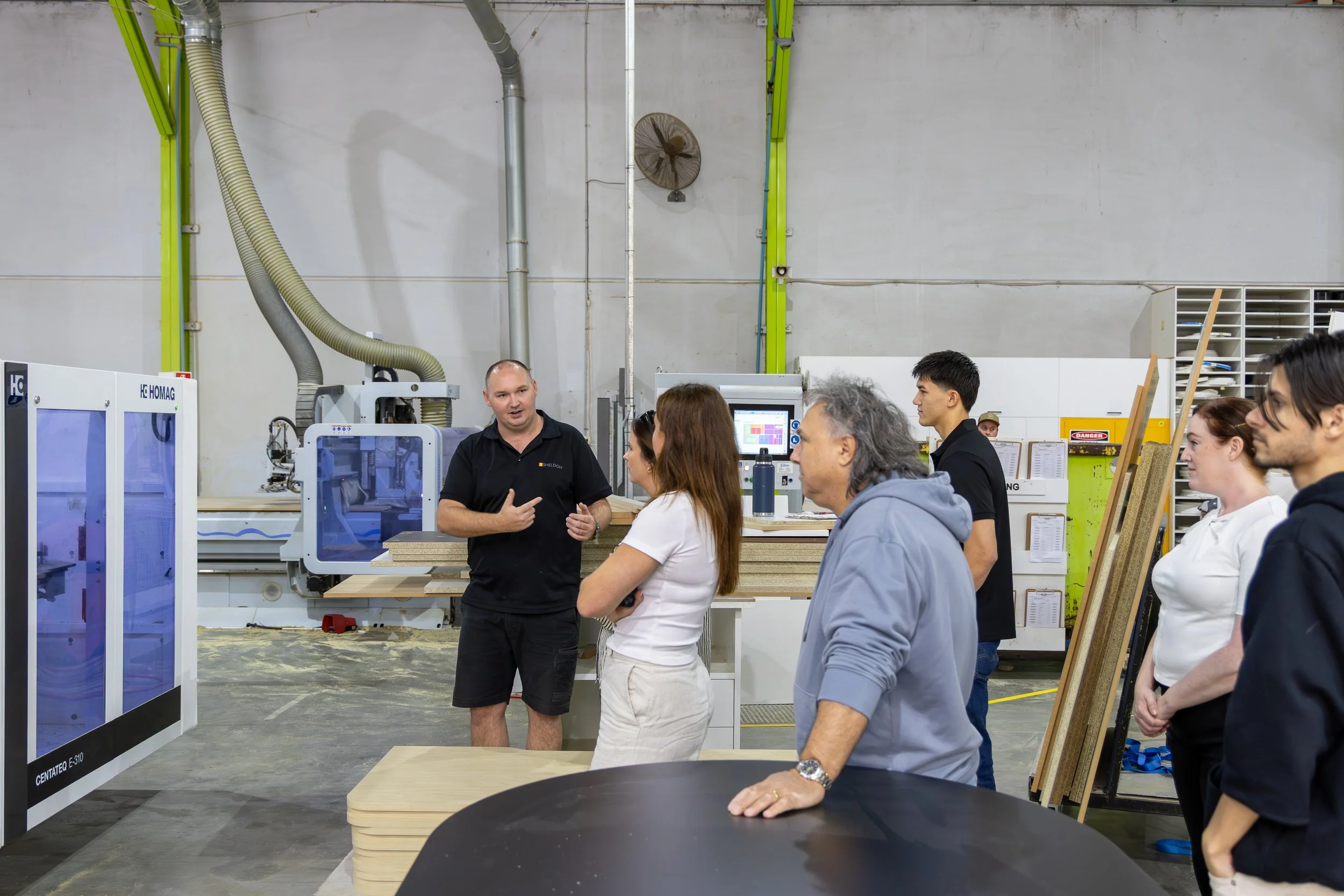The Benefits of Having In-House Trades as an Office Design and Construction Company
Clear communication and early collaboration between trades and services is key to a successful office fitout project. Like Sheldon (who has internal divisions for strategy, design, construction, partitioning, electrical, mechanical, and furniture and joinery manufacturing), contractors who are able to provide turnkey fitout solutions through the utilisation of internal divisions can assure several benefits across cost, program, quality, and value for money. At the centre of these benefits is the cross-trade collaboration that is available with integrated teams, from project inception to handover, meaning that the most efficient solutions for each trade requirement can be achieved. We have detailed the following benefits of integrated trade engagement for office fitout projects below:
Program adaptability and assurance
Supply chain assurance
Extended warranties on manufactured items
Cost assurance through control of trades
Ability to promote circularity throughout the project
Collaborative design process with key trades & stakeholders
Reduces construction stage risks
Reduces and assures costs and program timeline
Sheldon’s design and mechanical teams reviewing installations for a recent fitout project
1. Program efficiency
When design, services, and build teams are internal, they plan and sequence together, removing hand-offs that traditionally cause program drift. Sheldon formalises this with regular progress reporting, program reviews and site meetings so issues are surfaced at any stage of the project and solved quickly, keeping time certainty high. Internal teams also allow for the coordination of out-of-hours and priority management for projects that required streamlined / modified programs (including projects within live operational environments).
2. Integrated WHS and quality management systems
One in-house team for workplace design and delivery means one safety plan and one quality plan, applied consistently across trades, supported by audits, software, training and incident management within the same IMS, reducing gaps at trade interfaces. For example, Sheldon’s integrated ISO certified management systems for (Quality (9001), Safety (45001) and Environment (14001) puts the whole team on a single set of procedures, so quality, safety and environmental controls move in step with the program rather than slowing it.
3. Cost saving and value for money
Internal trades remove layers of margin and guesswork. When collaboration is coordinated early in the project, cost assurance and risk reduction are outcomes of having internal divisions, because designers, builders and services engineers are pricing and value-engineering together from day one. For example, an internal electrical and mechanical team can review services integrations proposed by the design team and identify existing material reuse, material variation, and energy efficiency opportunities that have cost-savin implications. For clients, that translates to reliable budgets, reduced whole of life costs and fewer variations.
Members from Sheldon’s Manufacturing, Design, and Project Management teams reviewing joinery
4. Supply-chain certainty and speed.
With in-house manufacturing for components such as furniture, joinery, upholstery, acoustics, and flooring (such as Sheldon’s Central Coast joinery manufacturing facility), companies can lock in critical-path items and work points, provide extended warranties and protect programs from external bottlenecks. It also assures a streamlined handover period, as defects can be rectified far quicker and with more responsibility.
Additionally, many modern fitouts combine architectural/furniture elements with technology, lighting controls and acoustics. An internal services team can deliver power, lighting, controls, AV and cabling as a coordinated package along with structural elements, optimised for efficiency and commissioning.
5. Sustainability by design.
Keeping core services in-house enables a circular approach: early identification of what to retain and reuse, modular furniture and partitions designed for disassembly, and coordinated waste targets (e.g., Sheldon’s 90%+ site recycling target) executed across trades. In the case of Sheldon, many clients receive post-project sustainability reporting covering materials, reuse, embodied carbon reductions and recycling outcomes.
A meeting between project management, finance, and estimating teams at Sheldon.
Offering a ‘one stop shop’ approach to workplace refurbishment reduces risk and creates peace of mind for clients. Because trades can participate during strategy and concept design, buildability issues are resolved up-front; pricing is accurate; and services, partitions and furniture are coordinated before documentation is locked. That early involvement is a deliberate value add that improves delivery efficiency and de-risks construction through one accountable team.
Click here to learn more about Sheldon’s workplace design and construction process.





